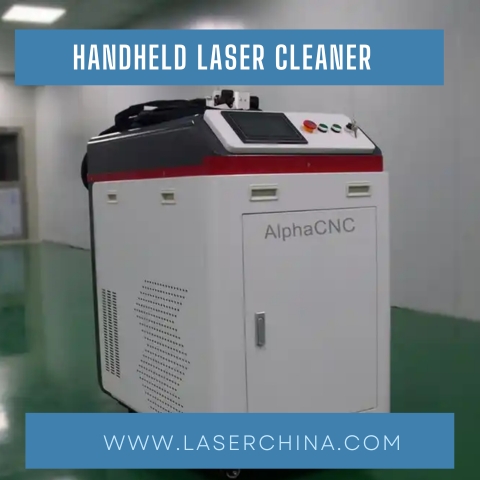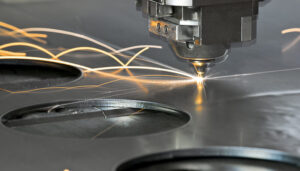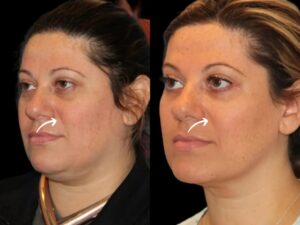
xr:d:DAF3Ua_aK6Q:45,j:8029205823414741481,t:23122707
The short answer is yes, but only if it’s used correctly. A handheld laser cleaner offers an advanced method of rust removal that relies on precise energy levels rather than abrasive contact or chemical reactions. Unlike sandblasting, grinding, or acidic solutions, a laser cleaner uses focused beams of light to break the bond between the rust and the base material. But here’s where things get interesting—it’s not just about the laser itself; it’s about how it’s applied.
In this article, we’ll dig into the real science behind laser cleaning, the critical factors that decide whether it’s safe or destructive, and what makes the handheld laser cleaner the preferred tool for industrial maintenance, restoration, and even delicate historical conservation.
What Happens During Laser Rust Removal?
Laser rust removal works on a principle called laser ablation. A concentrated beam of light—usually from a fiber laser—strikes the rusted surface. The rust absorbs this light and heats up rapidly, turning to plasma and vaporizing. The clean metal underneath reflects much of the beam, remaining largely unaffected.
But this process only works effectively under a fine balance of energy input and material response.
Here’s why:
-
Rust (iron oxide) absorbs laser energy more efficiently than base metals.
-
Clean metal reflects most of the laser beam, which minimizes damage.
-
Laser settings like power (measured in watts), pulse frequency, and cleaning speed must be adjusted to the type and thickness of rust as well as the base metal.
That’s why operators using a handheld laser cleaner must be trained to set the correct parameters. A minor error in power setting or movement speed can cause heat buildup, discoloration, or even micro-ablation of the base metal.
Factors That Ensure Safe Rust Removal
Let’s break down what actually allows the handheld laser cleaner to strip rust without touching the healthy metal underneath.
1. Wavelength Sensitivity
Laser cleaners are calibrated at wavelengths typically between 1064 nm and 1080 nm, depending on the type of fiber laser used. At these wavelengths, rust absorbs the energy efficiently while the underlying metal—steel, aluminum, or copper—tends to reflect it. This natural difference in absorption allows the laser to selectively target corrosion.
2. Pulse Duration Control
Short pulse durations (nanosecond or picosecond pulses) ensure the energy is delivered in bursts rather than continuously. This prevents the heat from spreading to nearby metal. In handheld laser cleaners, these pulses can be adjusted to suit sensitive surfaces, which is why it’s preferred for heritage restoration or aircraft parts where precision is critical.
3. Spot Size and Focusing
A properly focused laser beam ensures that energy is concentrated only on the corroded area. Most handheld laser cleaners come with adjustable lenses or scanning heads, allowing operators to modify the spot size or beam shape. This way, even uneven or grooved surfaces can be cleaned without risking damage to adjacent areas.
Use Cases Where Base Metal Integrity Is Crucial
A handheld laser cleaner isn’t a one-size-fits-all solution, but it shines in scenarios where preserving the base metal is non-negotiable. Here are some industries where the cleaner proves its value:
Automotive Restoration
Rust around chassis welds, wheel arches, and engine components is common. Laser cleaning can remove the corrosion while preserving the metal’s original thickness—important for structural safety and resale value.
Aerospace Maintenance
Aircraft components require non-abrasive cleaning methods to retain their aerodynamic and structural properties. Traditional methods can erode surface coatings or weaken the part. A laser cleaner avoids all of that, maintaining the airworthiness of parts.
Shipbuilding and Maritime
Saltwater corrosion is aggressive and widespread in marine applications. Using a handheld laser cleaner, technicians can clean localized rust without sandblasting, which may not be feasible onboard or in confined engine rooms.
Heritage Artifact Conservation
Brass sculptures, iron gates, or antique firearms corrode over decades. Laser cleaning ensures only the corrosion is removed, leaving behind the patina and fine details that define historical value.
Precision Matters More Than Power
It’s a myth that higher wattage means better cleaning. What matters more is how the power is used.
For example, a 1000W handheld laser cleaner might be overkill for small, delicate components but perfect for large-scale industrial steel structures. In contrast, a 200W or 500W model is sufficient for tools, auto parts, or light maintenance work. The goal isn’t to vaporize the rust instantly—it’s to do it safely, reliably, and without collateral damage.
Proper training and understanding of:
-
Cleaning speed
-
Angle of application
-
Distance from the surface
-
Cooling mechanisms (to prevent overheating)
are essential to achieve optimal results. Many modern handheld units come with touchscreen controls and safety interlocks to guide the user toward best practices.
When Things Can Go Wrong
While a handheld laser cleaner is generally safe, ignoring basic operating principles can lead to:
-
Overheating the surface: Especially if the beam is held in one spot too long.
-
Discoloration: A visible change in metal hue due to excessive energy input.
-
Micro-cracks: Rare, but possible if metal is repeatedly exposed to intense heat and rapid cooling cycles.
These issues are preventable. Operators should use test passes and calibrate laser intensity as per the metal and rust condition.
Why Professionals Are Replacing Traditional Methods
Here’s the hidden cost of other rust removal methods:
-
Sandblasting erodes the surface over time.
-
Grinding creates uneven finishes and loss of material.
-
Chemical cleaners can corrode metal if residue remains or can cause health risks.
A handheld laser cleaner eliminates the need for abrasive material, secondary waste, and chemical handling. It also operates quietly and with minimal setup.
Final Thoughts
A handheld laser cleaner can absolutely remove rust without damaging the base metal—but only when used with the right parameters, proper technique, and a thorough understanding of how laser-material interaction works. From automotive maintenance to heritage preservation, the ability to precisely target corrosion without surface degradation is what sets this tool apart.
It’s not just about rust removal—it’s about precision cleaning, where safety, efficiency, and surface integrity go hand in hand. Whether you’re in industrial maintenance or restoring a classic car, the laser doesn’t just clean—it preserves value.





